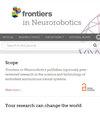The transmission line foreign body detection algorithm based on weighted spatial attention
IF 2.6
4区 计算机科学
Q3 COMPUTER SCIENCE, ARTIFICIAL INTELLIGENCE
引用次数: 0
Abstract
IntroductionThe secure operation of electric power transmission lines is essential for the economy and society. However, external factors such as plastic film and kites can cause damage to the lines, potentially leading to power outages. Traditional detection methods are inefficient, and the accuracy of automated systems is limited in complex background environments.MethodsThis paper introduces a Weighted Spatial Attention (WSA) network model to address the low accuracy in identifying extraneous materials within electrical transmission infrastructure due to background texture occlusion. Initially, in the model preprocessing stage, color space conversion, image enhancement, and improved Large Selective Kernel Network (LSKNet) technology are utilized to enhance the model's proficiency in detecting foreign objects in intricate surroundings. Subsequently, in the feature extraction stage, the model adopts the dynamic sparse BiLevel Spatial Attention Module (BSAM) structure proposed in this paper to accurately capture and identify the characteristic information of foreign objects in power lines. In the feature pyramid stage, by replacing the feature pyramid network structure and allocating reasonable weights to the Bidirectional Feature Pyramid Network (BiFPN), the feature fusion results are optimized, ensuring that the semantic information of foreign objects in the power line output by the network is effectively identified and processed.ResultsThe experimental outcomes reveal that the test recognition accuracy of the proposed WSA model on the PL (power line) dataset has improved by three percentage points compared to that of the YOLOv8 model, reaching 97.6%. This enhancement demonstrates the WSA model's superior capability in detecting foreign objects on power lines, even in complex environmental backgrounds.DiscussionThe integration of advanced image preprocessing techniques, the dynamic sparse BSAM structure, and the BiFPN has proven effective in improving detection accuracy and has the potential to transform the approach to monitoring and maintaining power transmission infrastructure.基于加权空间注意力的输电线异物检测算法
引言 输电线路的安全运行对经济和社会至关重要。然而,塑料薄膜和风筝等外部因素会对输电线路造成破坏,从而可能导致停电。传统的检测方法效率低下,而且在复杂的背景环境下,自动系统的准确性也很有限。首先,在模型预处理阶段,利用色彩空间转换、图像增强和改进的大型选择性核网络(LSKNet)技术,提高模型在复杂环境中检测异物的能力。随后,在特征提取阶段,模型采用本文提出的动态稀疏双层空间注意模块(BSAM)结构,准确捕捉和识别电力线异物的特征信息。在特征金字塔阶段,通过替换特征金字塔网络结构并为双向特征金字塔网络(BiFPN)分配合理权重,优化了特征融合结果,确保网络输出的电力线异物语义信息得到有效识别和处理。事实证明,先进的图像预处理技术、动态稀疏 BSAM 结构和 BiFPN 的集成能够有效提高检测准确率,并有望改变输电基础设施的监控和维护方法。
本文章由计算机程序翻译,如有差异,请以英文原文为准。
求助全文
约1分钟内获得全文
求助全文
来源期刊

Frontiers in Neurorobotics
COMPUTER SCIENCE, ARTIFICIAL INTELLIGENCER-ROBOTICS
CiteScore
5.20
自引率
6.50%
发文量
250
审稿时长
14 weeks
期刊介绍:
Frontiers in Neurorobotics publishes rigorously peer-reviewed research in the science and technology of embodied autonomous neural systems. Specialty Chief Editors Alois C. Knoll and Florian Röhrbein at the Technische Universität München are supported by an outstanding Editorial Board of international experts. This multidisciplinary open-access journal is at the forefront of disseminating and communicating scientific knowledge and impactful discoveries to researchers, academics and the public worldwide.
Neural systems include brain-inspired algorithms (e.g. connectionist networks), computational models of biological neural networks (e.g. artificial spiking neural nets, large-scale simulations of neural microcircuits) and actual biological systems (e.g. in vivo and in vitro neural nets). The focus of the journal is the embodiment of such neural systems in artificial software and hardware devices, machines, robots or any other form of physical actuation. This also includes prosthetic devices, brain machine interfaces, wearable systems, micro-machines, furniture, home appliances, as well as systems for managing micro and macro infrastructures. Frontiers in Neurorobotics also aims to publish radically new tools and methods to study plasticity and development of autonomous self-learning systems that are capable of acquiring knowledge in an open-ended manner. Models complemented with experimental studies revealing self-organizing principles of embodied neural systems are welcome. Our journal also publishes on the micro and macro engineering and mechatronics of robotic devices driven by neural systems, as well as studies on the impact that such systems will have on our daily life.
 求助内容:
求助内容: 应助结果提醒方式:
应助结果提醒方式:


